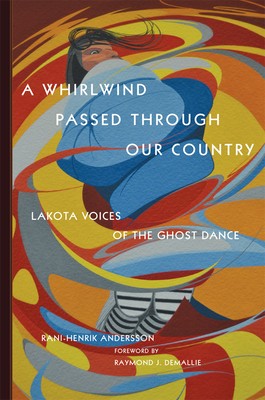
- We will send in 10–14 business days.
- Author: Rani-Henrik Andersson
- Publisher: University of Oklahoma Press
- ISBN-10: 0806160195
- ISBN-13: 9780806160191
- Format: 19.1 x 22.9 x 2.5 cm, minkšti viršeliai
- Language: English
- SAVE -10% with code: EXTRA
Reviews
Description
The inception of the Ghost Dance religion in 1890 marked a critical moment in Lakota history. Yet, because this movement alarmed government officials, culminating in the infamous massacre at Wounded Knee of 250 Lakota men, women, and children, historical accounts have most often described the Ghost Dance from the perspective of the white Americans who opposed it. In A Whirlwind Passed through Our Country, historian Rani-Henrik Andersson instead gives Lakotas a sounding board, imparting the multiplicity of Lakota voices on the Ghost Dance at the time. Whereas early accounts treated the Ghost Dance as a military or political movement, A Whirlwind Passed through Our Country stresses its peaceful nature and reveals the breadth of Lakota views on the subject. The more than one hundred accounts compiled here show that the movement caused friction within Lakota society even as it spurred genuine religious belief. These accounts, many of them never before translated from the original Lakota or published, demonstrate that the Ghost Dance's message resonated with Lakotas across artificial "progressive" and "nonprogressive" lines. Although the movement was often criticized as backward and disconnected from the harsh realities of Native life, Ghost Dance adherents were in fact seeking new ways to survive, albeit not those that contemporary whites envisioned for them. The Ghost Dance, Andersson suggests, might be better understood as an innovative adaptation by the Lakotas to the difficult situation in which they found themselves--and as a way of finding a path to a better life. By presenting accounts of divergent views among the Lakota people, A Whirlwind Passed through Our Country expands the narrative of the Ghost Dance, encouraging more nuanced interpretations of this significant moment in Lakota and American history.
EXTRA 10 % discount with code: EXTRA
The promotion ends in 23d.14:40:52
The discount code is valid when purchasing from 10 €. Discounts do not stack.
- Author: Rani-Henrik Andersson
- Publisher: University of Oklahoma Press
- ISBN-10: 0806160195
- ISBN-13: 9780806160191
- Format: 19.1 x 22.9 x 2.5 cm, minkšti viršeliai
- Language: English English
The inception of the Ghost Dance religion in 1890 marked a critical moment in Lakota history. Yet, because this movement alarmed government officials, culminating in the infamous massacre at Wounded Knee of 250 Lakota men, women, and children, historical accounts have most often described the Ghost Dance from the perspective of the white Americans who opposed it. In A Whirlwind Passed through Our Country, historian Rani-Henrik Andersson instead gives Lakotas a sounding board, imparting the multiplicity of Lakota voices on the Ghost Dance at the time. Whereas early accounts treated the Ghost Dance as a military or political movement, A Whirlwind Passed through Our Country stresses its peaceful nature and reveals the breadth of Lakota views on the subject. The more than one hundred accounts compiled here show that the movement caused friction within Lakota society even as it spurred genuine religious belief. These accounts, many of them never before translated from the original Lakota or published, demonstrate that the Ghost Dance's message resonated with Lakotas across artificial "progressive" and "nonprogressive" lines. Although the movement was often criticized as backward and disconnected from the harsh realities of Native life, Ghost Dance adherents were in fact seeking new ways to survive, albeit not those that contemporary whites envisioned for them. The Ghost Dance, Andersson suggests, might be better understood as an innovative adaptation by the Lakotas to the difficult situation in which they found themselves--and as a way of finding a path to a better life. By presenting accounts of divergent views among the Lakota people, A Whirlwind Passed through Our Country expands the narrative of the Ghost Dance, encouraging more nuanced interpretations of this significant moment in Lakota and American history.


Reviews